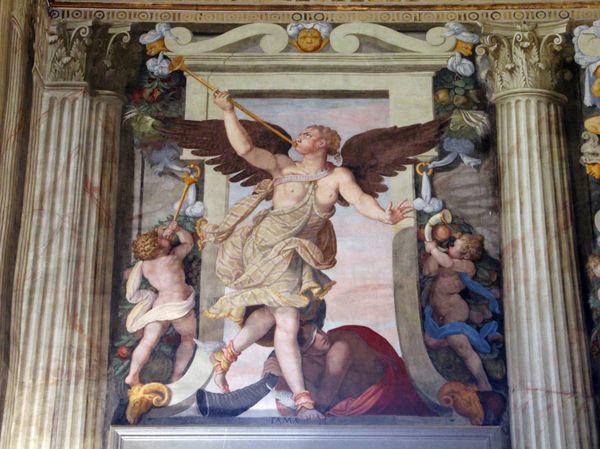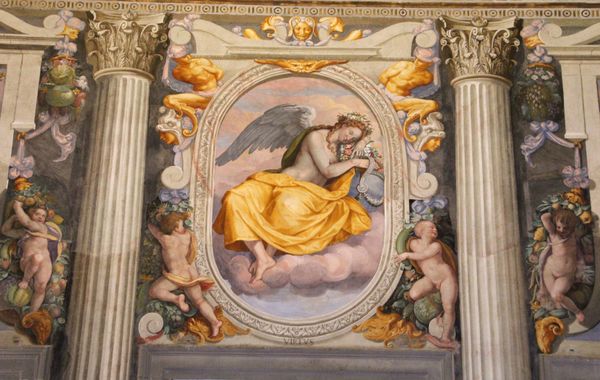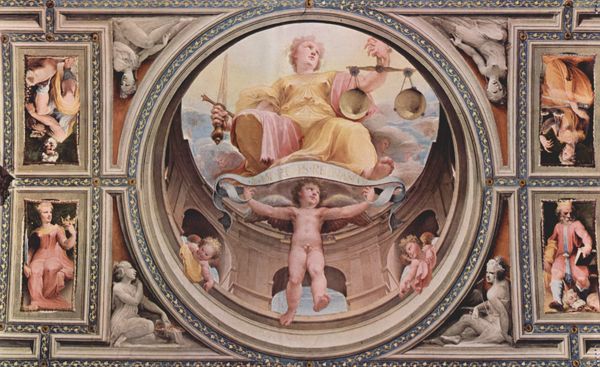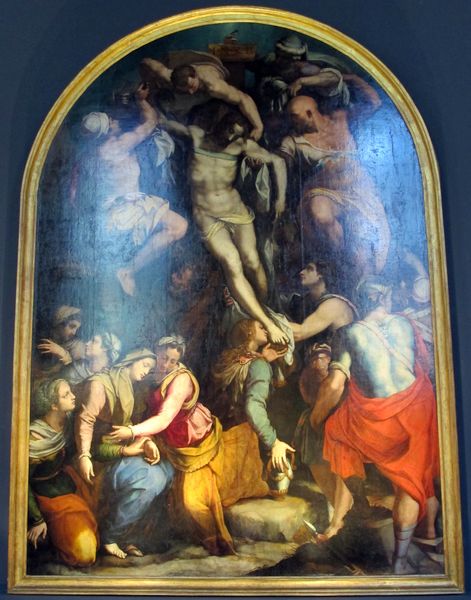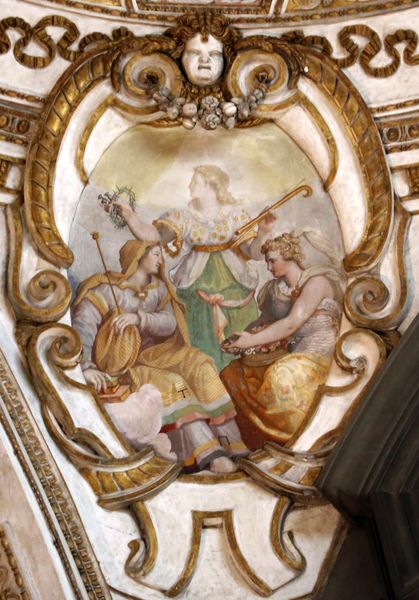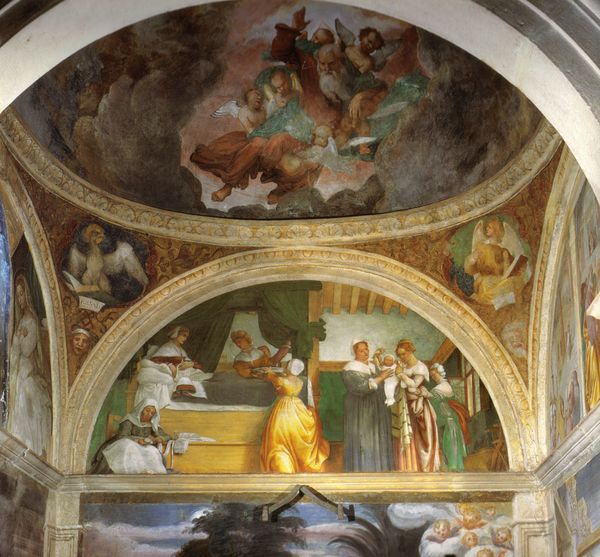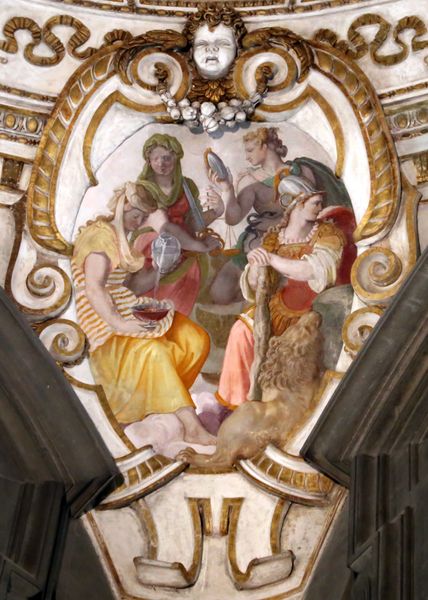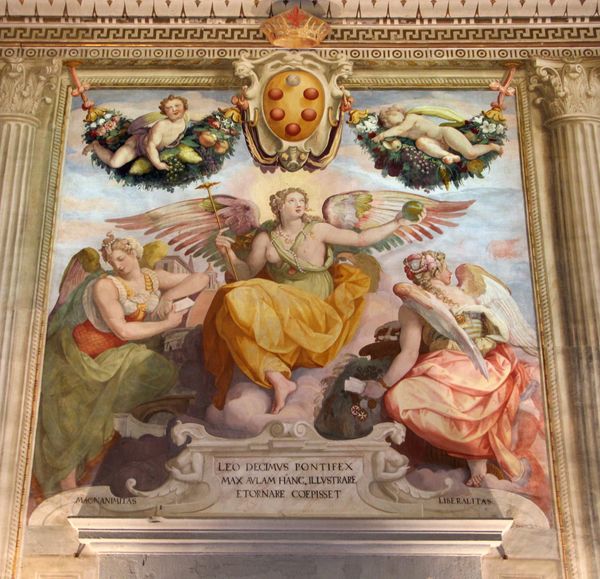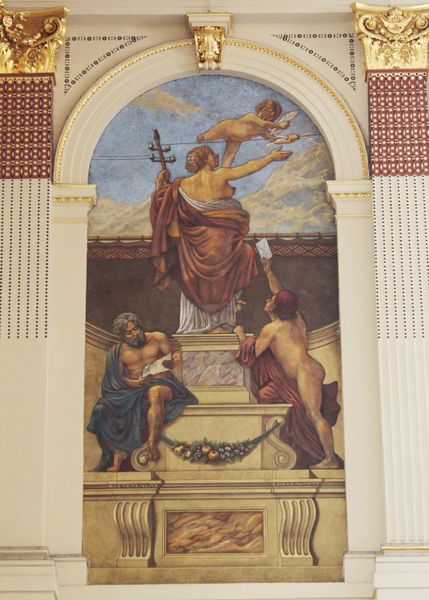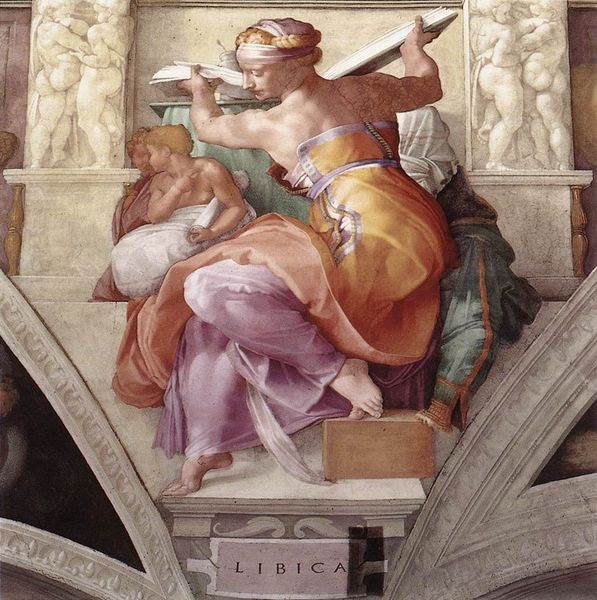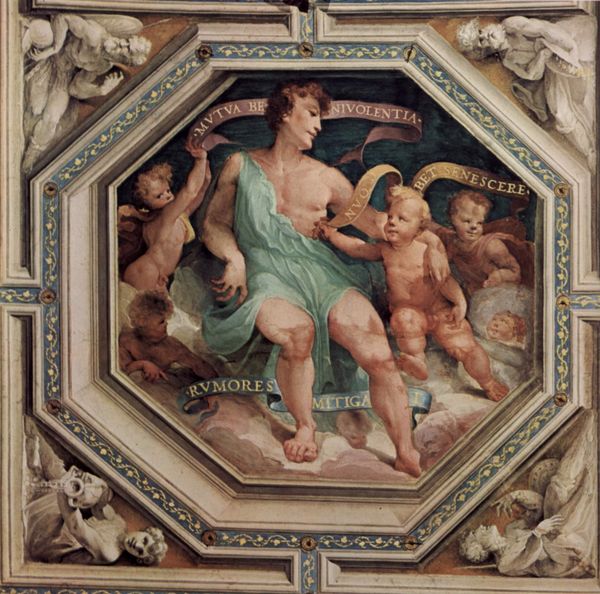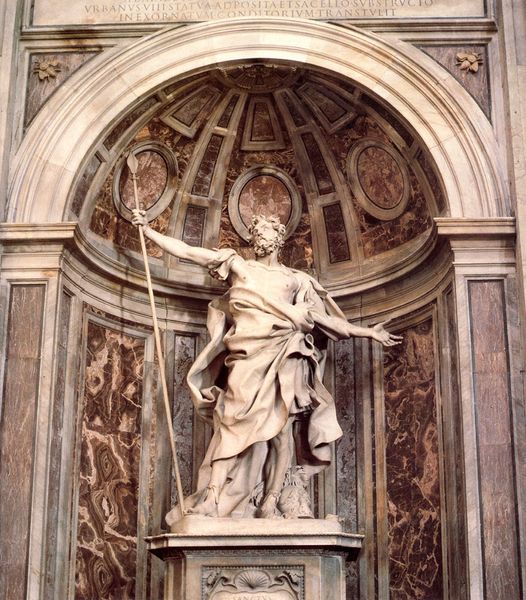
painting, fresco, mural
#
allegory
#
painting
#
mannerism
#
figuration
#
historic architecture
#
fresco
#
traditional architecture
#
history-painting
#
academic-art
#
italian-renaissance
#
mural
Copyright: Public domain
Editor: This is Alessandro Allori's "Honor," a fresco from 1582. The figure dominates the space, but its interesting that it seems both imposing and kind of vulnerable at the same time. What kind of story is this image telling, do you think? Curator: Allori’s "Honor" presents a compelling allegory rooted in Renaissance ideals. Have you noticed the laurel wreath? This immediately signals a connection to classical antiquity, associating the figure with triumph and virtue. Look at the architectural frame itself - how do you think that contributes to its meaning? Editor: I hadn't thought about the frame, but I guess the architectural elements lend the whole image more authority, maybe even grandeur? Curator: Exactly! And see the winged figure in armor, presenting not only martial strength but a willingness to defend. But the key lies in how these symbols intersect. Armor is traditionally a symbol of a warrior, whereas, wings evoke religious imagery of angels as divine protectors, which tells us something profound about how Honor was conceived in Allori’s time. How do you interpret the juxtaposition? Editor: It’s interesting how these details paint Honor not just as power but almost as a spiritual quality tied to righteous action, rather than merely battle or victory. It challenges assumptions about power. Curator: Precisely! And note the children bearing fruit, crowns, books and animal heads, hinting at prosperity, kingship, education, and sacrifice... How all of those details coalesce adds to a narrative complexity rarely recognized in singular images of power. Editor: I see so much more nuance now! Looking closer helps unravel the values of the Renaissance. It's all really thoughtfully interconnected. Curator: Indeed. Allori's fresco speaks volumes about its cultural moment and provides an invitation to consider Honor with fresh eyes.
Comments
No comments
Be the first to comment and join the conversation on the ultimate creative platform.
